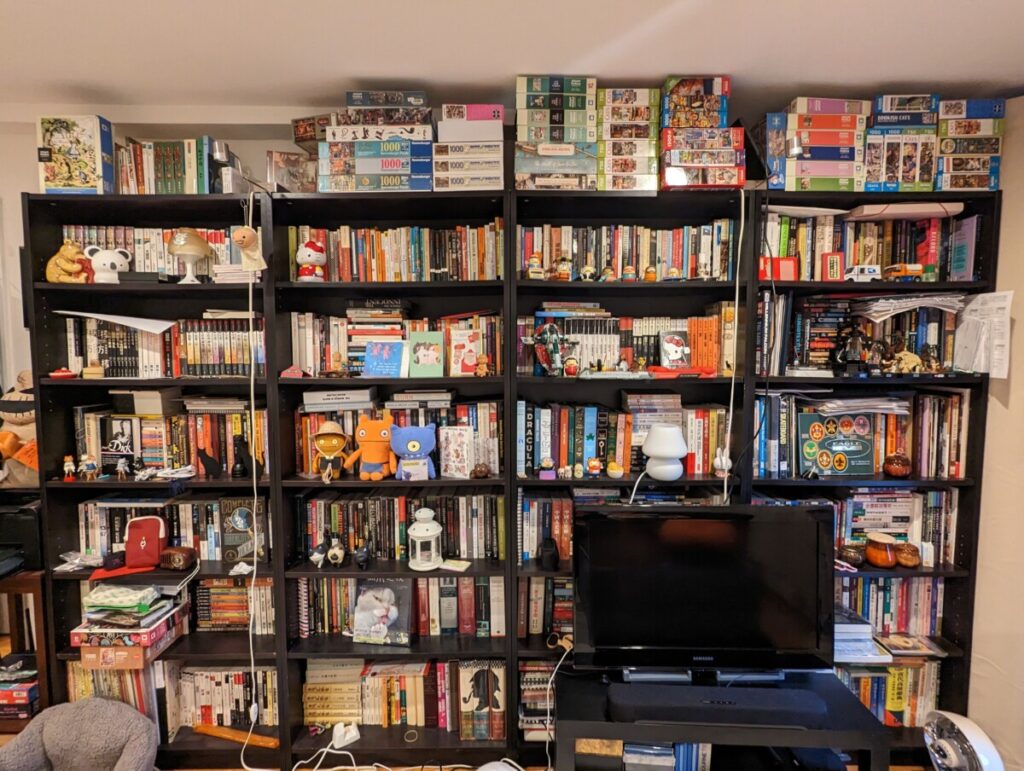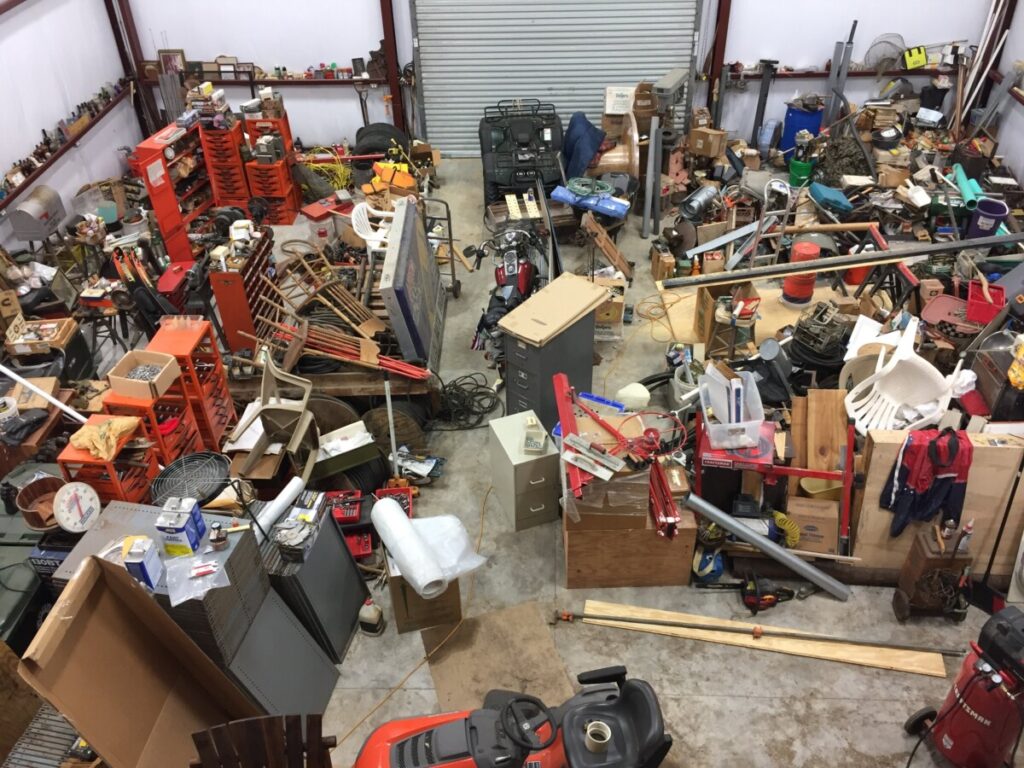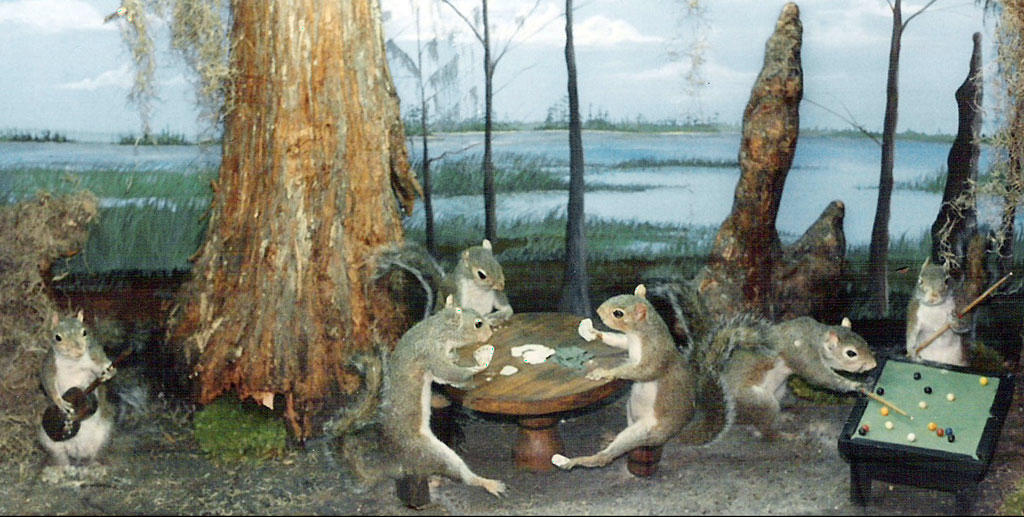Like the homework assignment last week, we will begin with an in-class exercise and you will have an opportunity to complete it before our next class.

First, let’s look at the photo above of my bookshelves at home. Let’s discuss different strategies for organizing what we see.
Second, I would like you to work in a pair (or three if we have an odd number of students this week). The person you work with should be someone who you did not work with last week. Take turns showing your photo, explain the context of the photo (where is it, what kinds of things it shows), and discuss together strategies for organizing it in different ways. The owner of the photo should take notes of the organization strategies discussed. Help each other generate as many strategies as possible! After you’ve had time to discuss and take notes, each team will report back to the class about the room photos and some of the strategies of organization. Everyone should be making notes on the strategies reported by other teams, because you can use those in your own homework assignment.
For your homework, each student will write a memo with five parts that you will publish as a comment to this homework post. It should follow the model below. Post it before our next class.
TO: Prof. Ellis
FROM:
DATE:
SUBJECT: Room Organization
INTRODUCTION
One or two sentence introduction to your memo, its purpose, what it contains, etc.
ROOM TO BE ORGANIZED
Embed your photo here. Go to imgbb.com, click "Start Uploading," select your photo, set a time for it to be deleted (leave it up for at least 2 weeks), and copy the URL generated at the bottom of the "Upload Complete" screen (it will look like https://ibb.com/letters). Return to the comment box on OpenLab, click the icon that looks like a photo, paste the URL to your image, click Save. After you click "Publish Comment," your image should appear where you inserted it (which should be here after your introduction.
LIST OF ITEMS IN THE ROOM
Write a list of the items in the room. It can be a numbered list, a bullet point list, or a paragraph. It should not be organized. List things as they appear in the picture--top to bottom, left to right, clockwise, etc. If there are multiple similar items such as books, you don't have to list every title--you can write 12 books, or 6 detective novels and 7 textbooks, etc.
POSSIBLE ORGANIZATION STRATEGIES
Discuss the organization strategies that you and your teammate came up with during the in-class exercise.
ORGANIZATION STRATEGY
Write a sentence stating which organization strategy/strategies you intend to use. Then, explain in sentences, a list, or a table (like we made in the last homework assignment) how you organize everything in your list of items above. This will involve some copy-and-pasting, but everything in your list of items in the room above should have a proper place in your organization strategy in this section.






